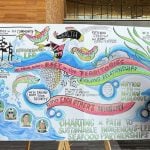Q: My teenager has problems at school with teachers and other students. He reacts by yelling and throwing things around. The school said he needs to go to an anger management program. He is dead set against this. He said he doesn’t need a program and doesn’t understand what anger management is all about. He doesn’t want to go to a group where everyone will find out personal things and talk about him all over the school. I want to help him, but don’t know how to go about it.
Read Also

Farm auctions evolve with the times
Times have changed. The number of live, on-farm auctions is seeing a drastic decline in recent years. Today’s younger farmers may actually never experience going to one.
A: People are responsible for managing themselves, something no one else can do. People do need anger education to learn about the nature of anger and their own nature.
Learning about oneself is hard. It means recognizing how you feel, think and behave. You might pass on some information about anger to your teenager, and ask him to read it and think about whether it applies to him. If he will read about anger, and write a report for the school, they may consider this as an alternate to an anger education course.
Good sources about anger are Nancy Ford’s book Getting Over Getting Mad and Bill Defoore’s Anger: Deal With It, Heal With It, Stop It From Killing. Also, material I have written about anger is on the Saskatchewan Library website. To find it, go to www.producer.com and type “anger” in the go box.
Visualizing anger
Images can help people understand their anger. Here are some ways of seeing this emotion.
Anger can be seen as a paper bag into which feelings of frustration and irritation are added continually. You need to find healthy ways to empty the bag.
The healthiest is to express your feelings to someone, in assertive and respectful ways. Unhealthy ways involve letting anger build up into an explosion or be converted into depression, or turning to drugs to try to dull it.
Another image is an iceberg. Only 10 percent of an iceberg is above the water. This represents our awareness of anger. But anger covers up or hides many other feelings, such as fear, hurt, embarrassment, anxiety or irritation.
People need to dive down within themselves, which I call “inner snorkeling,” to identify and deal with those hidden emotions that fuel their anger so readily.
A third image, quite topical in view of Mt. St. Helen’s, is a volcano. A volcano explodes from pressure that builds over time and finds an often dramatic release. People can remove themselves from pressures through time-outs and find safe places and ways to let their anger out, such as assertive venting.
Peter Griffiths is a mental health counsellor based in Prince Albert, Sask. His columns are intended as general advice only. His website is wwwsasktelwebsite.net/petecope.














